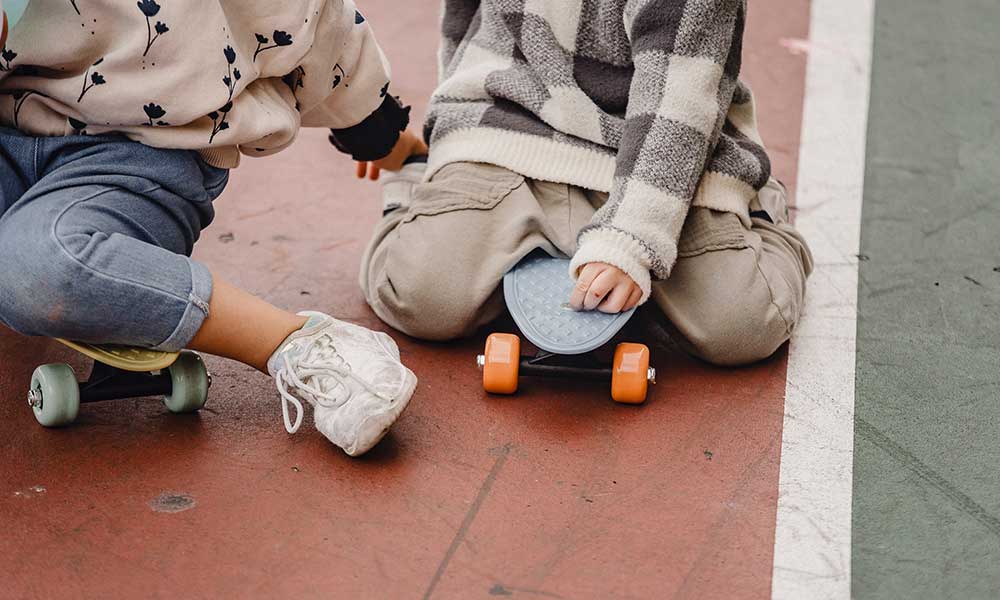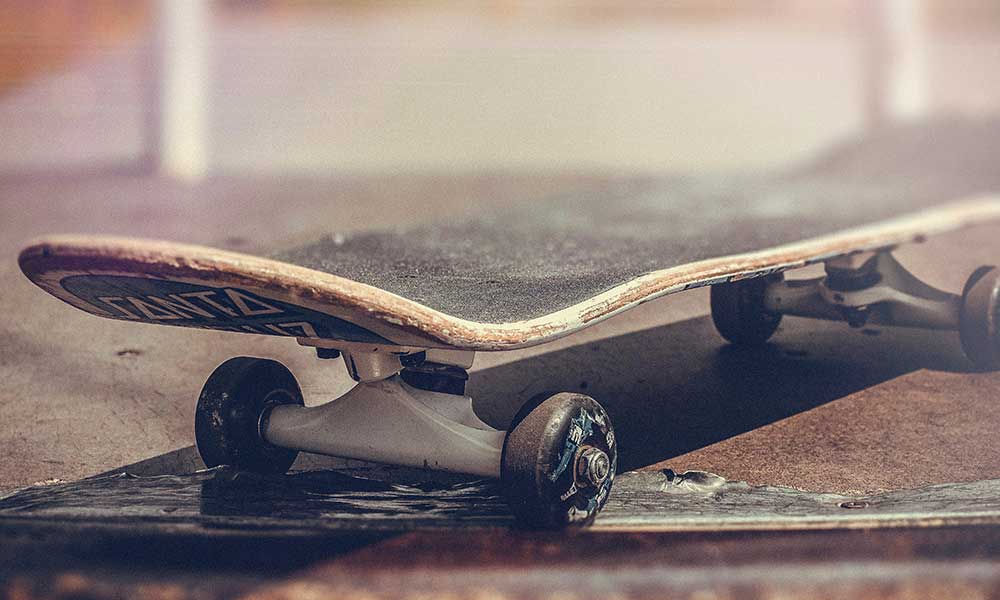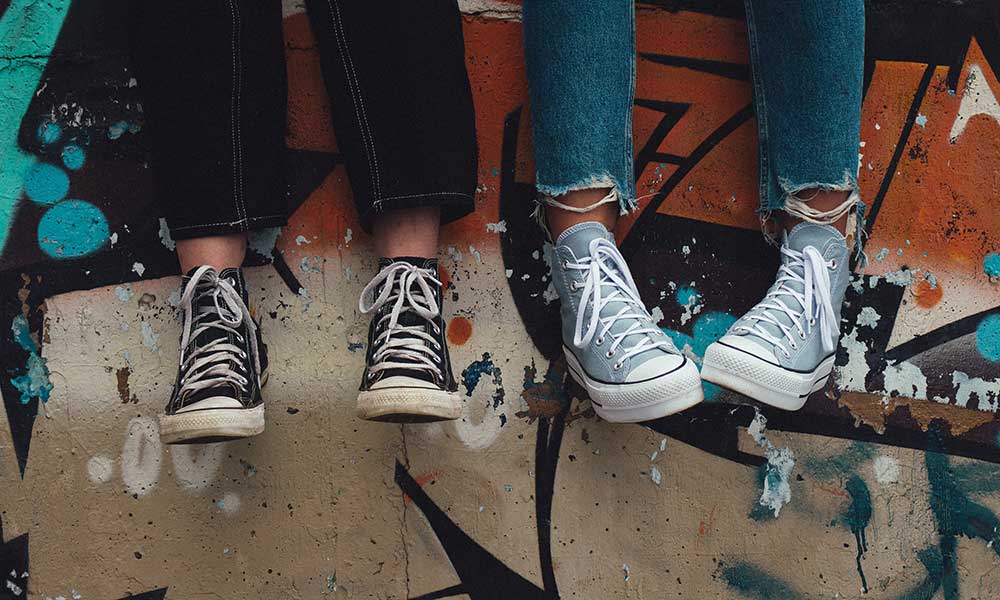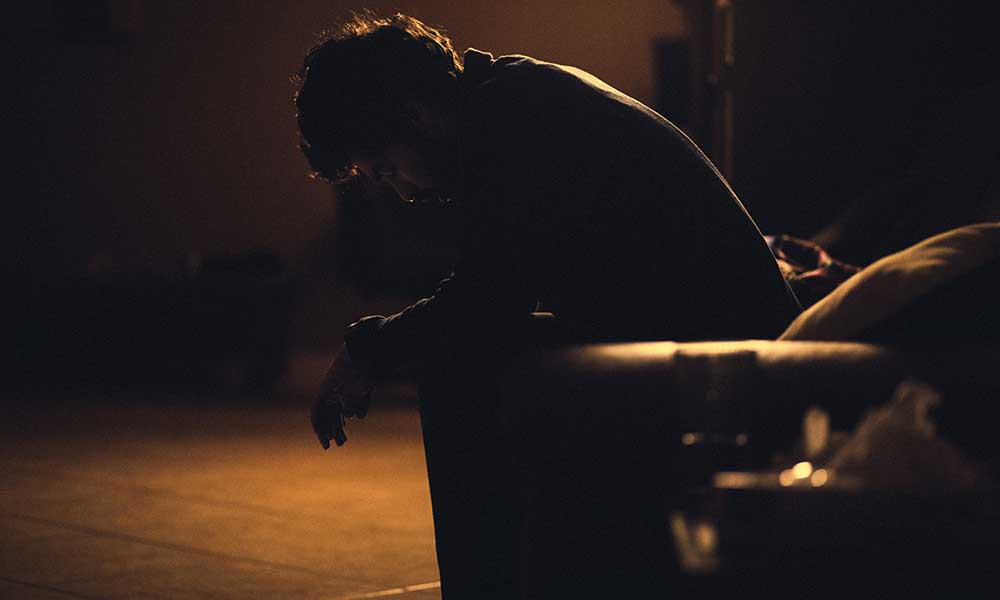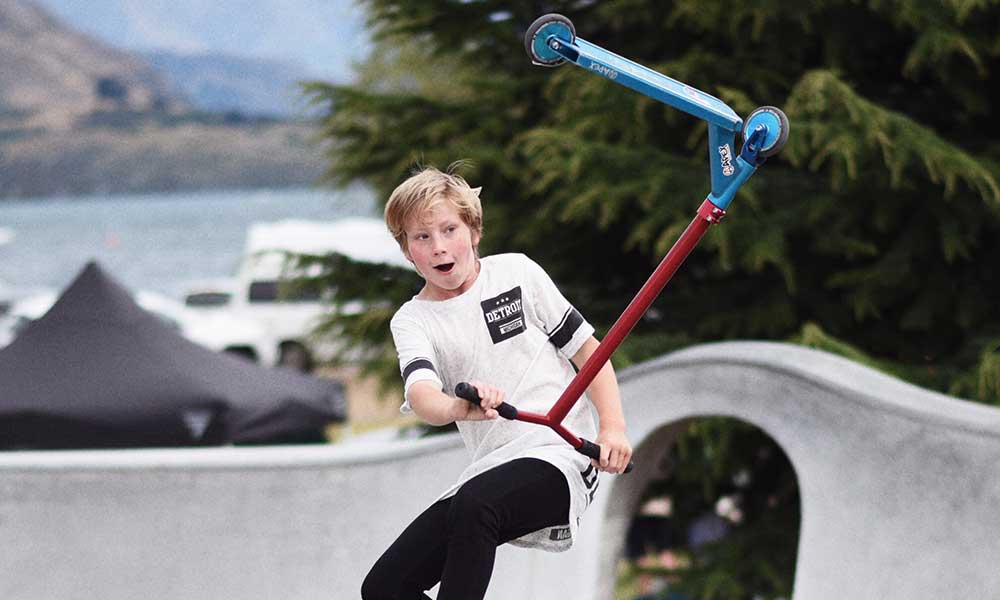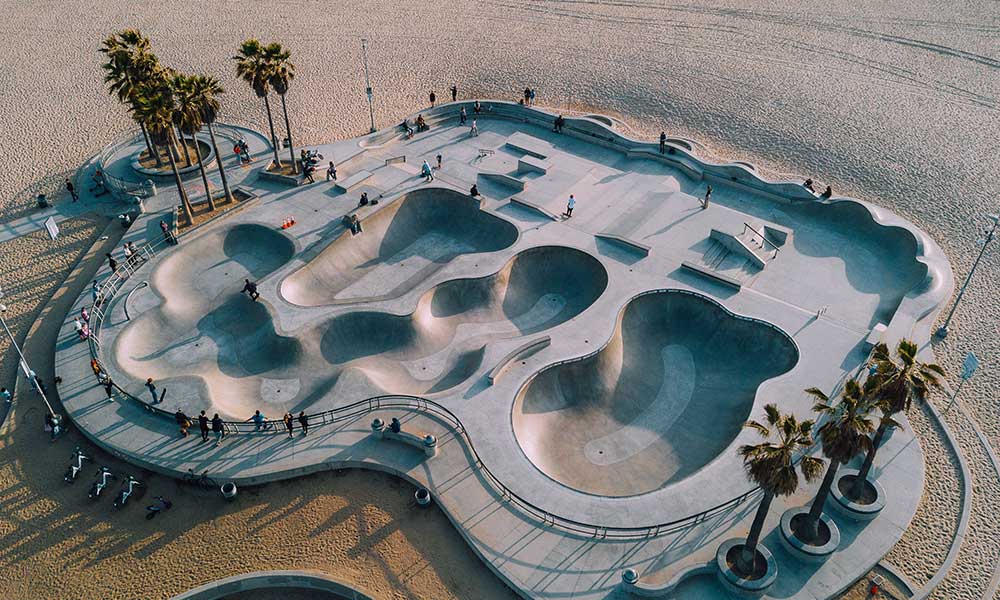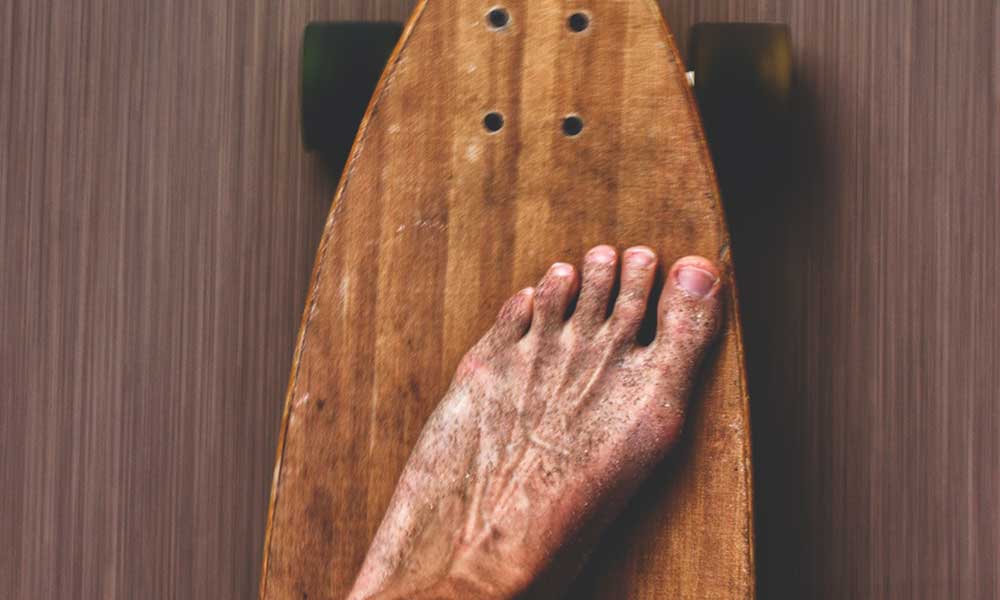Skateboarding, like musical instruments, is best learned when you’re young. You have more time and your mind is more receptive to new techniques and skills.
You don’t need to be a great skateboarder to teach kids how to ride. In fact, even if you can’t roll for more than a few feet you should be okay.
How Do You Teach a Kid to Skateboard?
Here’s what you need to know about teaching kids how to skateboard.
Buy A Mini Board
Look for a complete skateboard designed with smaller riders in mind. These mini boards are perfect for kids, but they’re not necessarily made for them. We’re not talking about boards that are half-size, as most are just 3 or 4 inches less than a typical skateboard.
A skateboard that is about 28-inches long and 7-inches wide should suffice. It may still look a little big when your kid stands on top of it, but that’s normal. They will grow into it.
Look for a quality skateboard made by an established brand. Don’t cheapen on the construction as it might not perform as well as it should and you could be buying another one in a few months.
Spend between $50 and $80 on a first skateboard for a kid. If you can’t find one you like new, check Facebook Marketplace or Craigslist for a lightly used skateboard at the same price-point.
Keep Them Safe
Every year, dozens of people die on skateboards. The vast majority of these deaths involve children and motor vehicles. They ride into busy roads or cross busy streets without looking. And because they lack the experience needed to stop themselves or get out of the way, they get hit.
It’s also a distraction, as a kid enjoying themselves on a skateboard is less likely to stop and look both ways.
The first part of the learning process, therefore, is to teach kids about basic road safety and tell them to avoid busy roads at all times.
Buy Some Protective Gear (Knee Pads, Elbow Pads, Helmet)
In addition to the aforementioned safety tips, you’re going to need some protective gear. This won’t do much if they are hit by a car, but it will protect their little bones and could also prevent concussions when they fall.
Purchase some knee pads, elbow pads, and a helmet. Wrist guards can also help in those early stages because when a beginner falls, their natural instinct is to use their hands to block their fall.
Proper gear includes a good pair of footwear. Your child will need closed-toe shoes that are comfortable and durable, as they may need to drag their feet along the ground to slow down.
Head and Foot Position
Once you have the necessary equipment, you must teach kids about balance, body position and foot position.
It’s all about movement. The more they move their head and upper body, the more their balance will suffer. Their head should be positioned so that it’s roughly in the middle of their feet.
Their knees should be slightly bent with their feet on the bolts of the skateboard.
Their stance is dependent on their dominant foot. If they are right foot dominant, it should be on the back bolts (regular stance). If their left foot is dominant, it should be their back foot (goofy stance).
Your child’s dominant foot is usually the one they prefer to kick with when playing soccer or kickball. If they have never played, simply roll them a ball and ask them to kick it back to you.
- Right Dominant (Regular Stance): Left = front foot; right = back foot.
- Left Dominant (Goofy Stance): Left = back foot; right = front foot.
How to Push
Find a flat surface, such as a garage, empty parking lot, or driveway, and teach them how to push and about mongo pushing.
Pushing is when they hang their dominant foot over the side of the skateboard and then push themselves forward.
They will need to keep their front foot on the skateboard while they do this and it should be pointed forward. Place their foot toward the center of the skateboard so that their toes are just touching the front bolts.
They should hang their back foot, give a gentle push, and then return their back foot to the skateboard. It is a swift movement, a minor hop. It’s very easy to lose balance performing this movement, so have them move slowly and push gently while you run alongside.
Once they have mastered that movement, they can increase their speed. When they are able to do a few pushes and then seamlessly return their feet to the skateboard, they’re ready to advance.
Learn to Tic Tac
Although it’s not really a trick as such, the tic tac is a relatively simple technique that you can teach your child.
It involves switching the skateboard from right to left to gather momentum and speed without pushing. You can see this trick in action on the below video.
It involves placing some weight on the skateboard’s tail to lift the nose slightly off the ground and then shifting to the left at the same time. This is then repeated with the other side.
The movement should be slight. The goal is not to scrape the tail off the ground or make a 90-degree turn. It’s about pushing just enough to lift the front wheels and then pivoting a few degrees.
This technique is great to learn at an early age. Not only does it show kids how to gain speed without moving their feet from the skateboard, but it also improves control, balance, and physical coordination.
Start Teaching Basic Tricks
Once you get the basic stance and techniques down, you can teach them a few tricks. These are best learned at a local skatepark, but you can also set up a mini ramp in your yard or just outside your home.
If their child’s skill level exceeds that of the parents, this is the point they will probably go off and do their own thing. They will prefer to learn from other kids than from you and may also get ideas from pro skaters and YouTubers. That’s fine, just remember to keep skateboarding safe and fun for them and ensure you monitor them whenever they are near the road or at the skatepark.
What Age Should a Child Start Skateboarding?
Some people say that you should put a child on a skateboard as soon as they can stand upright and express an interest. And if you’re watching them, giving them plenty of protective gear, and waiting to catch them when they fall, that might be okay.
In reality, however, it’s best to wait until they are at least 5 or 6. By this age, their balance has improved significantly and they are less likely to harm themselves.
Regardless of their age, make sure they are protected and keep a close watch at all times.

